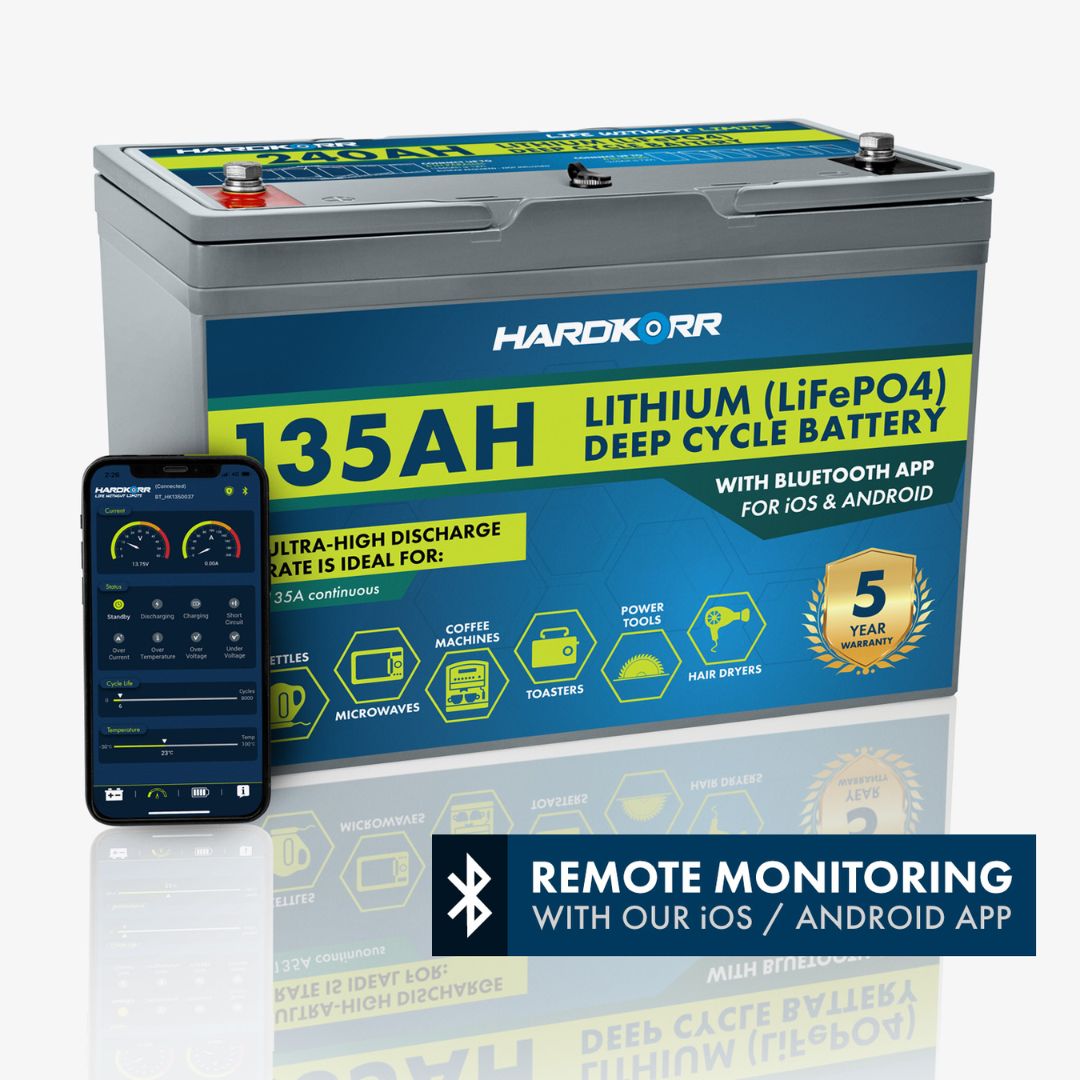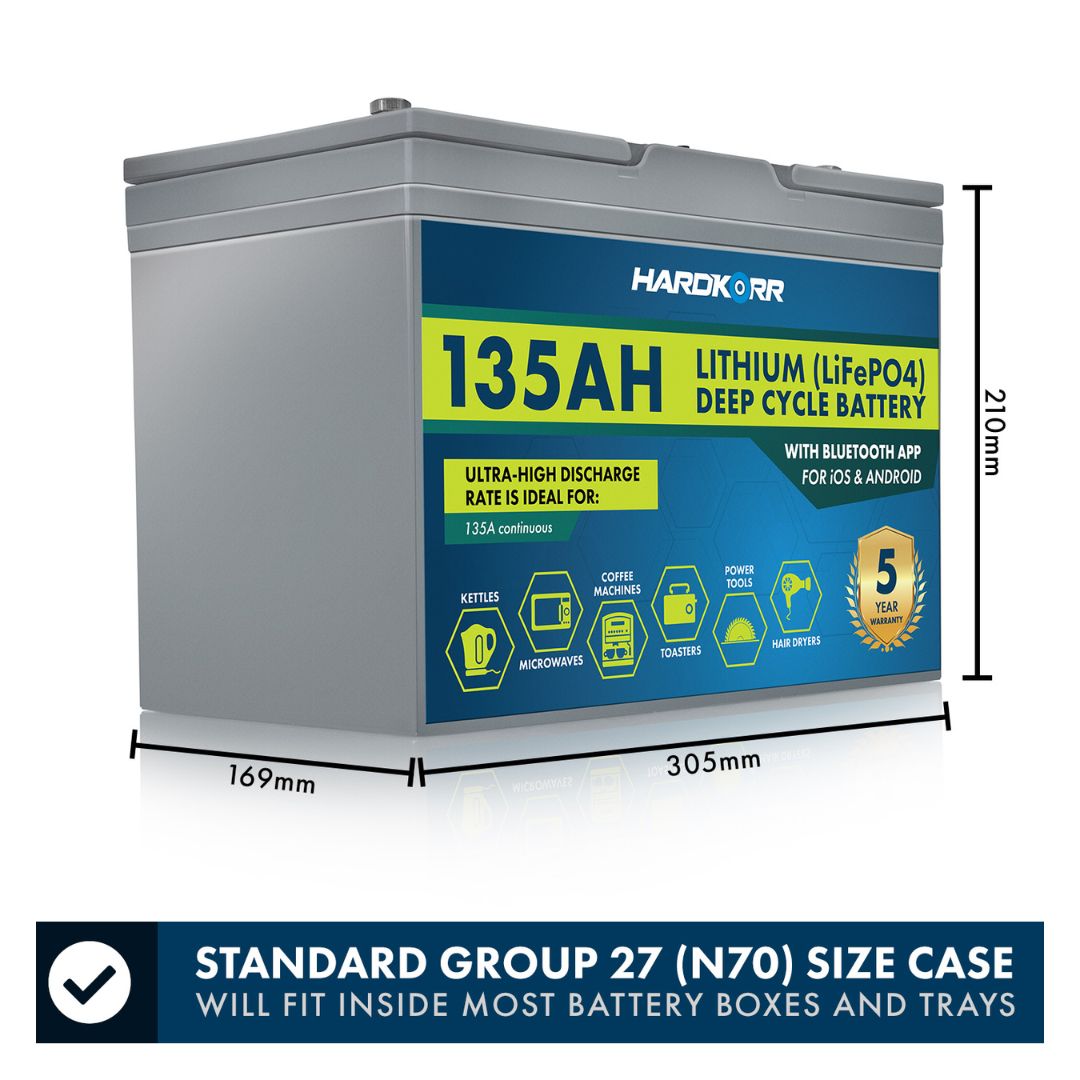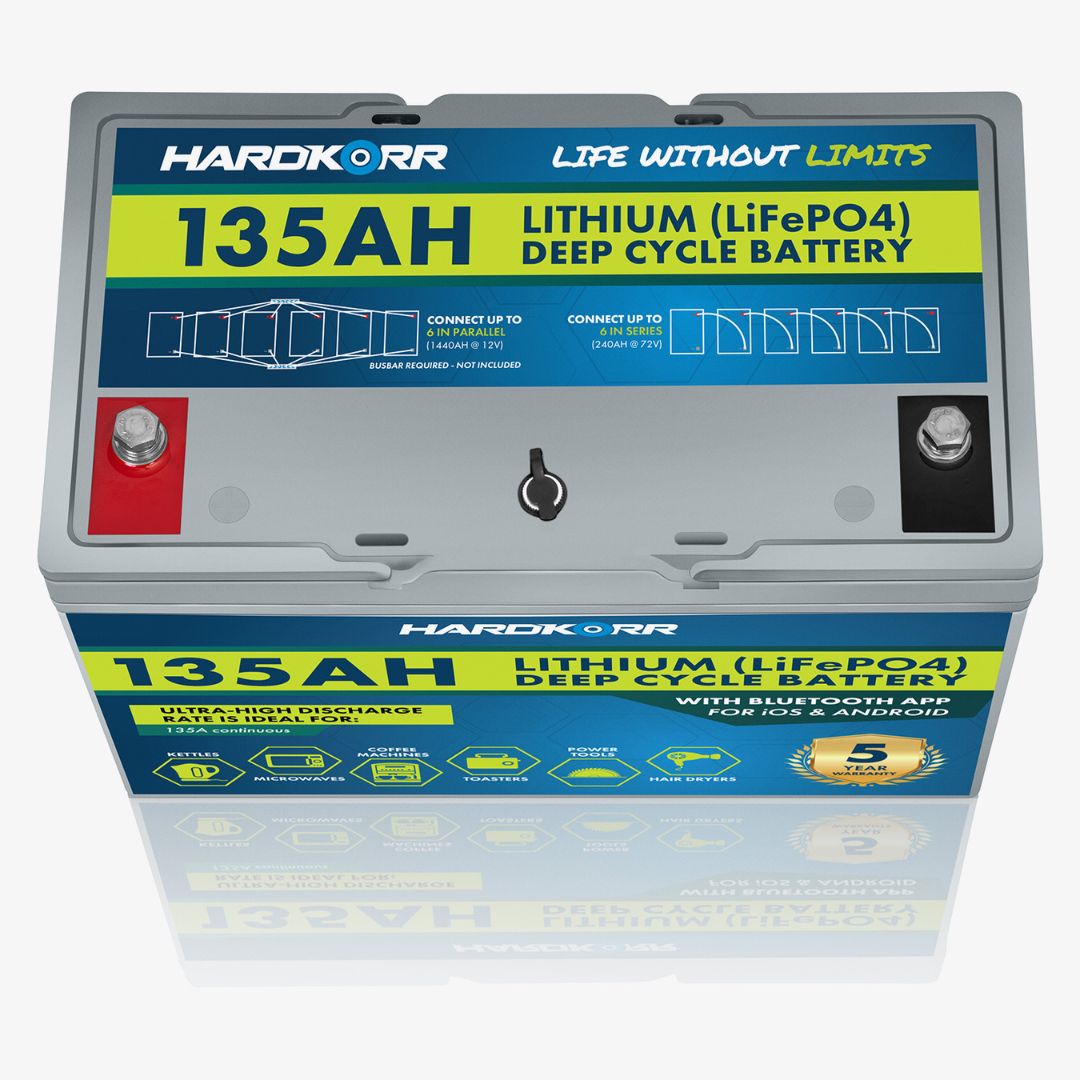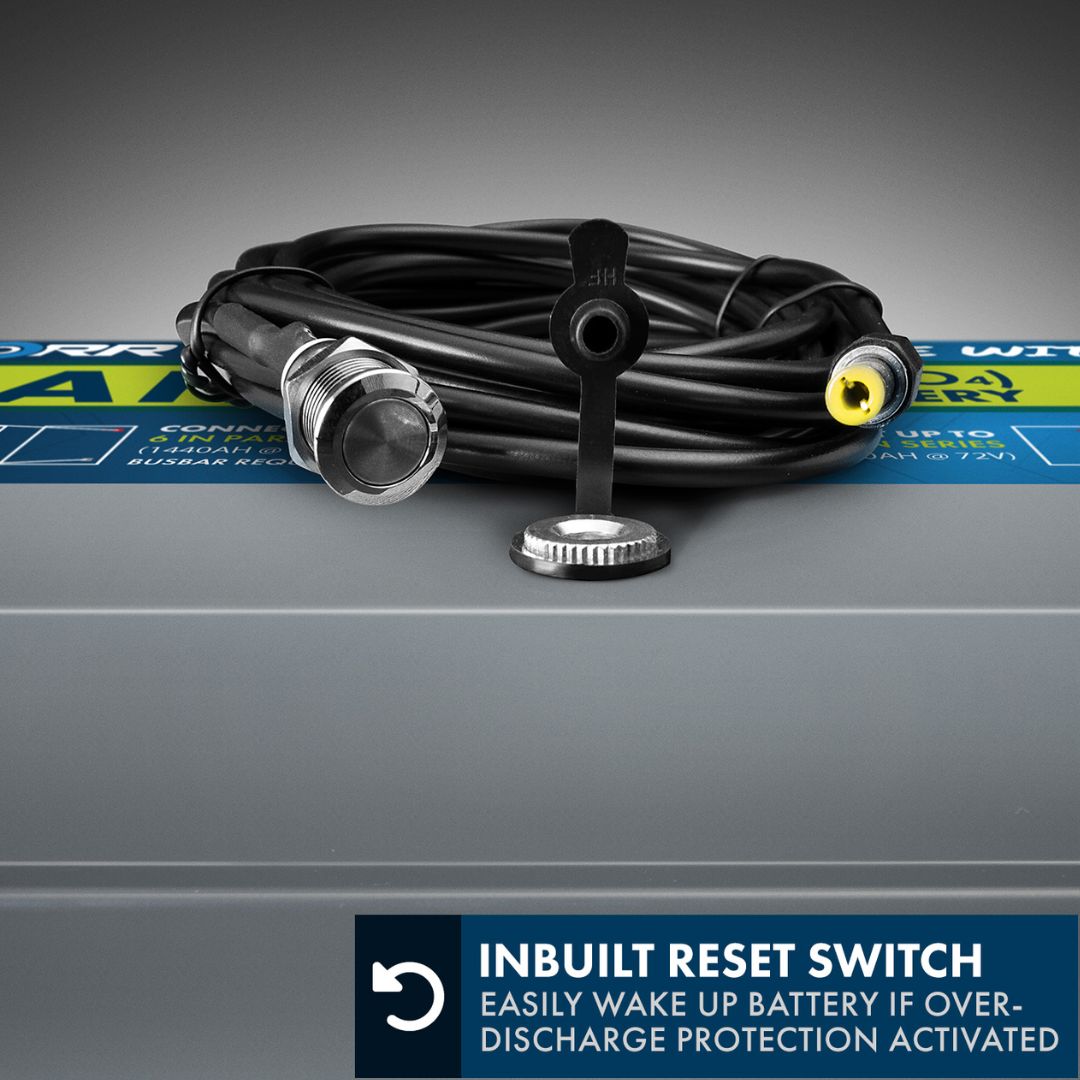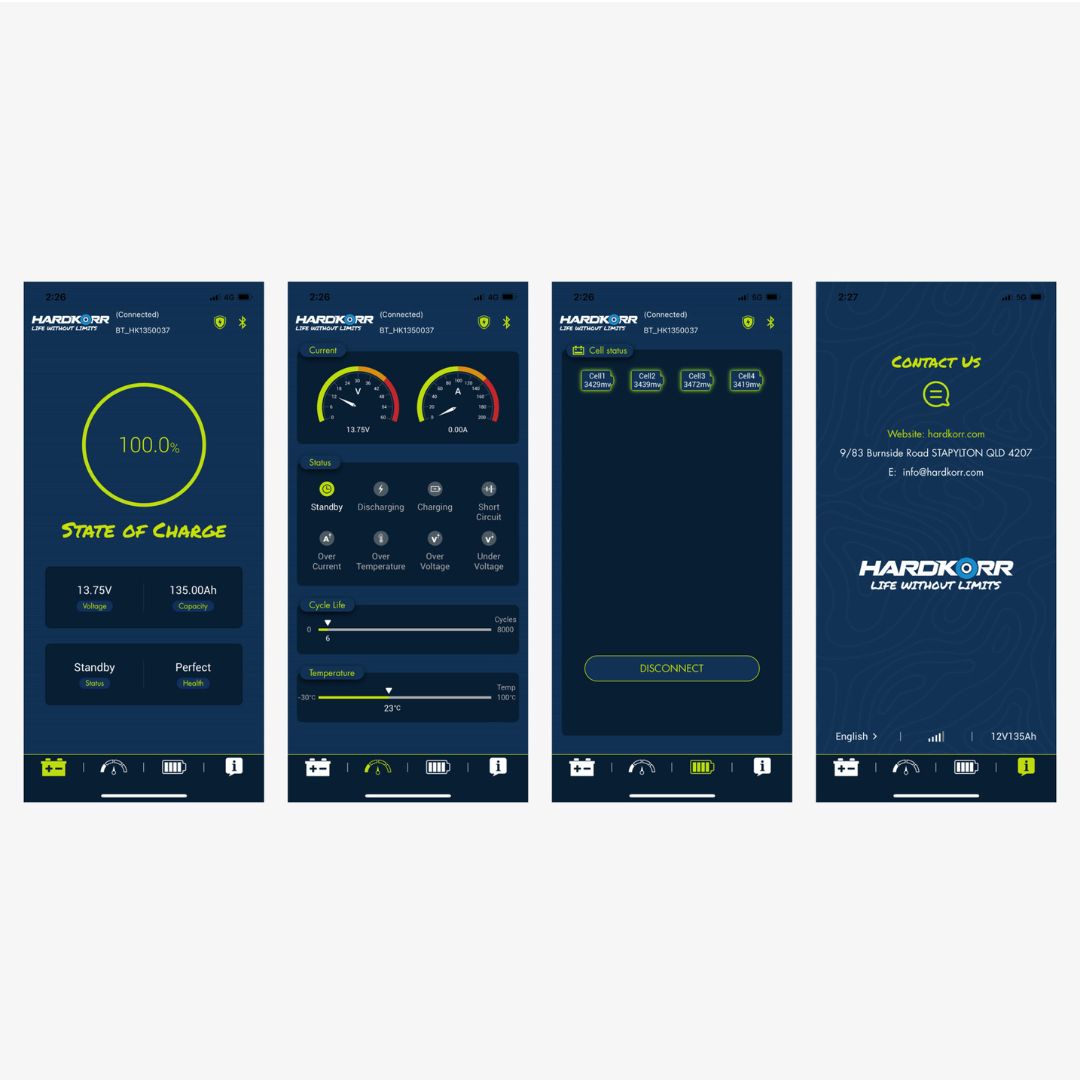Search
HARDKORR 135Ah Lithium (LiFePO4) Deep Cycle Battery with Bluetooth
$1,199.00 (inc GST)
On Sale: (inc GST)
Postage for this will not be included in the final price of this order. You can either pick up this item, or we can quote on postage, after you place your order
Introducing the 135Ah Lithium (LiFePO4) Deep-Cycle Batteries: The Pinnacle of Reliability and Innovation
The latest 135Ah lithium deep-cycle batteries are the most reliable and technologically advanced batteries ever manufactured. With Bluetooth® monitoring, outstanding performance characteristics, and full international certification, these batteries ensure you’re never short of 12V power on your 4WD and camping adventures. Best of all, they deliver 135Ah of usable power in a standard Group 27 (N70) size case, making them compatible with standard battery boxes and trays.
Advanced Manufacturing and Rigorous Quality Assurance
These batteries are crafted using best-in-class robotic manufacturing processes, featuring rigorous quality assurance, including serialized tracking and pre-shipment cycle testing. Each battery’s test report is stored for future reference, ensuring confidence in their performance. Backed by a 5-year Australian warranty, these batteries are built to last.
Top-Quality Cylindrical Cells
The 135Ah deep-cycle lithium batteries are constructed with high-quality 26700 high-discharge cylindrical cells. These cells are carefully matched to ensure minimal internal resistance and voltage differences, then ultrasonically welded to form strong, reliable connections. Encased in custom-molded ABS plastic cell holders, these batteries are designed to withstand shock and vibration, ensuring consistent reliability.
Cylindrical vs. Prismatic Cells
While prismatic cells are lighter and easier to manufacture, cylindrical cells offer greater efficiency, produce less heat, and tend to be more reliable. These advantages led to the decision to use cylindrical cells, similar to the approach taken by Tesla and Rivian, for these batteries.
Certified to International Standards
These lithium batteries meet all required and optional international standards for performance and safety, including:
- UN 38.3: Safety testing for lithium metal/lithium-ion batteries in transport.
- IEC 62133-2:2017: Safety testing for portable lithium batteries under intended use and misuse, including vibration testing.
- IEC 62619:2022: Safety standards for lithium batteries in industrial use.
- CE: Compliance with EU safety, health, and environmental protection requirements.
The manufacturing facility is also certified to:
- ISO 9001: Quality management systems.
- ISO 14001: Environmental management systems.
More Usable Power, Longer Life
Understanding the difference between nominal and C20 capacity is crucial when comparing batteries. The C20 rating represents the number of amps a battery can deliver over 20 hours, providing a realistic measure of performance. Hardkorr values transparency and always quotes the C20 rating, ensuring you receive the accurate and reliable power you expect.
Bluetooth® Monitoring App
These batteries come equipped with Bluetooth® connectivity, allowing you to monitor key data wirelessly through the Hardkorr Battery app, available on iOS® and Android® devices. The app provides:
- Key Information: State of charge, current voltage, available capacity, status, and health.
- Detailed Information: Current voltage, net current in/out, status, cycle life, and temperature.
- Cell Status: Voltage of each cell to ensure balance.
- Contact Details: Quick access to Hardkorr’s website, address, and email for support.
The app also logs any instances where a BMS protection circuit is activated, including over-charge, over-discharge, under-voltage, over-current, and over-temperature.
Why Upgrade to Lithium?
- Long Cycle Life: Lasts up to 10x longer than Sealed Lead Acid (SLA) batteries.
- More Usable Capacity: Safely use up to 70% of capacity, and 99% in emergencies (versus 50%/70% for SLA).
- Lightweight: Approximately half the weight of equivalent SLA batteries.
- Environmentally Friendly: Non-toxic, acid-free, and can be installed in any orientation.
Convenient Remote Reset Switch
The Battery Management System (BMS) in these lithium batteries includes a protection circuit that activates if the voltage drops below 10.0V, putting the battery into 'sleep' mode. Resetting this circuit used to be a challenge, but the included remote reset switch provides an easy solution. Simply connect the switch to the socket on the battery and hold the button for 5 seconds to reset the over-discharge circuit. The switch can also be flush-mounted into your 12V setup for added convenience.
Features:
- 135A (1C) Continuous Discharge
- 6000+ Cycles @ 80% DOD
- Connect 6 in Series or Parallel
- IP64 Waterproof & Dustproof
- Bluetooth Monitoring via Phone App
- Comprehensive 5-year Australian warranty
Specifications
- Nominal Voltage: 12.8V
- Capacity (C20): 135Ah
- Max Series/Parallel Configuration: 6S/6P
- Normal Charge Voltage: 14.4V ± 0.2V
- Standard / Fast Charge Current: 27A / 67A
- Max Discharge Current (Constant): 135A (1C)*
- Max Discharge Current (Pulse): 600A*
- Discharge Cut-off Voltage: 10.0V
- Charge Temperature Range: 0°C to 55°C
- Discharge Temperature Range: -20°C to 60°C
- Storage Temperature Range: -5°C to 45°C
- Ingress Protection: IP64
- Self-Discharge: <3% per month
- Weight: 14.0kg
- Dimensions: 305mm x 169mm x 210mm (Group 27)
Certifications:
- UN 38.3
- UL 1642
- IEC 62133-2:2017
- IEC 62619:2022
- CE
Attention: This battery is not suitable for under-bonnet use.
Note on Discharge Current: If multiple batteries are connected in parallel, the maximum discharge current is multiplied by the number of batteries in the array. For example, connecting two of these batteries in parallel allows for a discharge of up to 270A.


